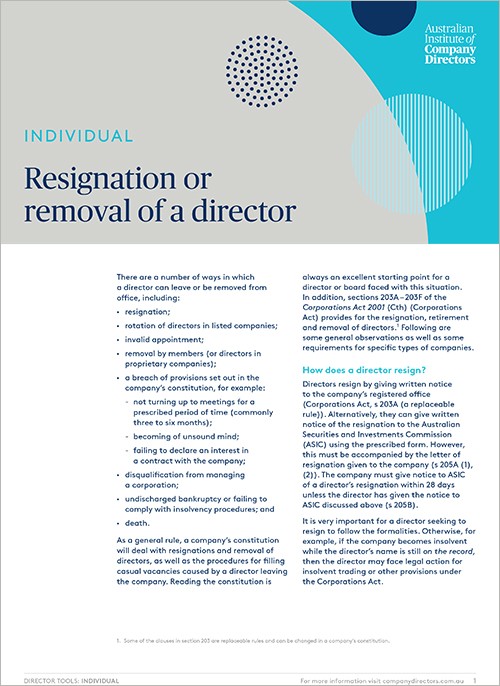
There are a number of ways in which a director can leave or be removed from office, including:
- resignation;
- rotation of directors in listed companies;
- invalid appointment;
- removal by members (or directors in proprietary companies);
- a breach of provisions set out in the company’s constitution, for example:
- not turning up to meetings for a prescribed period of time (commonly three to six months);
- becoming of unsound mind;
- failing to declare an interest in a contract with the company;
- disqualification from managing a corporation;
- undischarged bankruptcy or failing to comply with insolvency procedures; and
- death.
As a general rule, a company’s constitution will deal with resignations and removal of directors, as well as the procedures for filling casual vacancies caused by a director leaving the company. Reading the constitution is always an excellent starting point for a director or board faced with this situation. In addition, sections 203A – 203F of the Corporations Act 2001 (Cth) (Corporations Act) provides for the resignation, retirement and removal of directors.1 Following are some general observations as well as some requirements for specific types of companies.
Downlaod the tool to read more.
Latest Director Tools
Already a member?
Login to view this content

